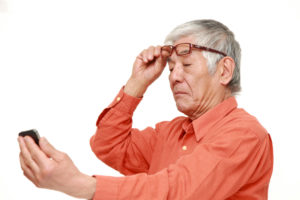Teary? It may Not be Allergies, it Could be Dry Eye Disease!

The Complex Matter of Tears
Tears aren’t just for crying. All day every day, we rely on a quality tear film to keep the ocular surface adequately lubricated. Without a healthy tear film, which originates in glands in the eye, the surface of the eyes becomes dry. If your eyes have ever been dry, you know that symptoms like burning, tearing, redness and blurry vision are more than a minor nuisance. When symptoms like this occur, we have to look at the intricate nature of tear production.
Tears contain water (which naturally has salt in it), oil, and mucus. A gland in the eye produces a precise mixture of the three, and then the tear film gets spread across the ocular surface through blinking. Some of the tear film naturally evaporates, which is why our eyes can feel dryer on certain days or when we stare at a computer screen for several minutes. If the ratio of one substance to another is off, or if the environment is too dry, the tear film doesn’t stay in place long enough and symptoms develop.
The Challenge with Dry Eye Disease
The primary challenge for people with dry eye disease is that many of those who have the condition don’t know it. We live such a digital lifestyle these days that the eyes are continually straining. The term commonly used to describe symptoms that mimic dry eye disease is digital eye strain. Without awareness, a person may go months or years living with symptoms that could be resolved with appropriate diagnosis and treatment.
Tests to Diagnose Dry Eye Syndrome
Dry eye disease may masquerade as digital eye strain forever if we didn’t have precision diagnostic tests to discern between the two. To diagnose dry eye disease, an ophthalmologist will conduct a thorough consultation and symptom assessment. Then, tests may be performed to evaluate tear film production (Schirmer test), tear evaporation (tear breakup test), and the overall quality of the tears (tear osmolarity).
Screening for dry eye disease does not take long and provides the specific information we need to develop an appropriate treatment plan. To learn more, call our Houston area office at (713) 668-7337.
Category:

 CONNECT
CONNECT
Leave a Reply